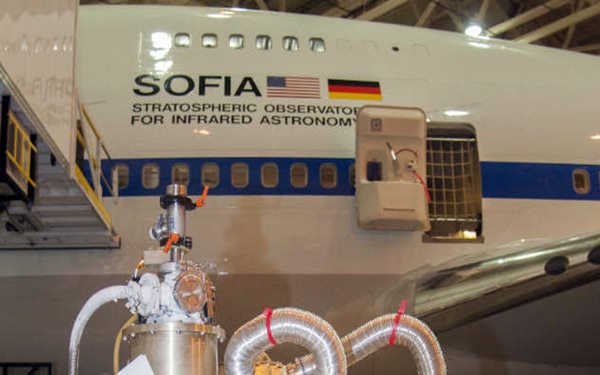NASA’s Stratospheric Observatory for Infrared Astronomy (SOFIA) is all set to start its first explore mission in 2018. As per the report given by NASA, SOFIA will examine magnetic fields, comets, Saturn’s moon Titan, and more. This year, SOFIA will enter into its fourth year of full operation. The observation program will be carried out in between February 2018 and January 2019. As per the report research flights will be conducted from SOFIA’s home base at NASA’s Armstrong Flight Research Center Hanger 703, in Palmdale, California. SOFIA program is now managed by Ames Research Centre of NASA located in Silicon Valley, California.
The flying observatory SOFIA is a Boeing 747SP jetliner. It is designed to carry a 100-inch diameter telescope. The project is conducted jointly by NASA and the German Aerospace Centre, DLR. This will help scientists to know how magnetic fields affect the rate transformation of an interstellar cloud to the shape of stars.
SOFIA carries the High-resolution Airborne Wideband Camera-Plus knows as HAWC+. It will give information about the contribution of active black holes to luminous, distant galaxies. It measures incoming light waves’ alignment. The HAWC+ instrument will be used in a joint research program with the Atacama Large Millimeter/submillimeter Array. It will track magnetic fields which will reveal some data to understand more about the formation of planets.
Using the flying observatory, the scientists will try to detect methane on Mars. It will help to understand how methane levels change with the Red Planet’s seasons.
SOFIA will help to study comet 46P/Wirtanen which passes close to the Earth. It is expected that the dust erupted by the comets will help scientists to know about the evolution of the early solar system.
SOFIA will return to Christchurch, New Zealand in June and July to study objects that are best viewed from the Southern Hemisphere. As per NASA, the HAWC+ instrument will be onboard SOFIA for its first observations from the Southern Hemisphere. It will help to study magnetic fields in star-forming regions and around black holes in the Large and Small Magellanic Clouds.
